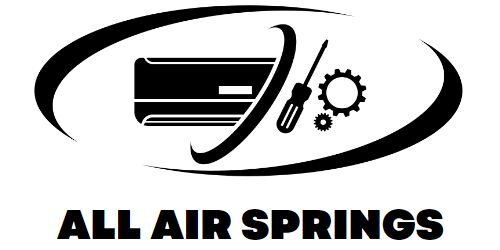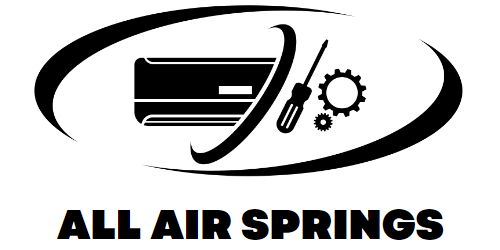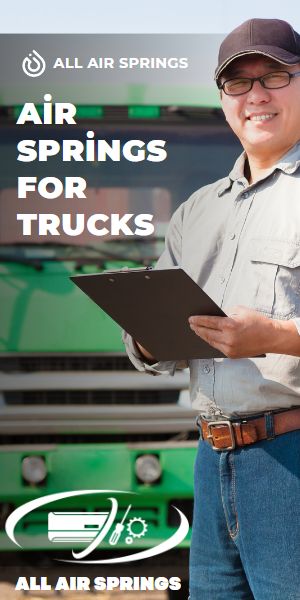Everything You Need to Know About Air Suspension Helper Kits: Benefits, Installation, and Maintenance
How Air Suspension Works
Air suspension is a type of vehicle suspension system that uses air-filled bags or air springs to replace traditional metal coil or leaf springs. This system helps provide a smoother and more comfortable ride, especially for vehicles carrying heavy loads. The key components of an air suspension system include the air bags, a compressor, air lines, and valves.
The air bags are the primary element, inflated or deflated to adjust the ride height and provide a cushioning effect for the vehicle. The compressor is responsible for pumping air into the bags, while valves control the air flow to each bag. This allows for precise control over the suspension system’s performance, enabling it to automatically adjust to various conditions like load changes or road surface irregularities.
Air suspension systems are often used in luxury cars, trucks, and buses to enhance comfort. They are also commonly found in vehicles designed for towing or carrying heavy loads. Unlike traditional suspension systems, air suspension allows for more flexibility in managing the ride quality and load capacity, improving overall performance and reducing wear on other vehicle components. This makes it a valuable choice for those looking for superior ride quality and enhanced vehicle stability.
Why Choose an Air Suspension Helper Kit?
An air suspension helper kit is a popular choice for vehicle owners who want to enhance their existing air suspension system. These kits provide extra support and help to solve common issues such as sagging, reduced ride height, and rough driving conditions. The main reason people choose an air suspension helper kit is to improve their vehicle’s load-carrying capacity.
Heavy-duty vehicles, trailers, or those used for towing can benefit significantly from these kits, as they prevent the suspension from bottoming out under heavy loads. Air suspension systems are designed to adjust to the weight of the vehicle, but without additional support, they can struggle to handle larger payloads. An air suspension helper kit helps maintain proper ride height and stability, even when towing or carrying extra weight.
In addition to improving load handling, these kits also offer better control and stability, making for a smoother ride. They reduce the strain on the vehicle’s original suspension system, resulting in less wear and tear over time. Furthermore, air suspension helper kits can improve safety, as they help maintain consistent ride quality, regardless of the vehicle’s load or road conditions. This makes them an excellent investment for those who frequently haul heavy loads or who want to improve their vehicle’s overall suspension performance.
Key Features of an Air Suspension Helper Kit
When choosing an air suspension helper kit, it’s important to consider the key features that will ensure the system meets your needs. These kits are designed to enhance the performance of your existing suspension by adding extra support and adjustability. Here are some crucial features to look for when selecting a high-quality air suspension helper kit:
-
Adjustability
: The ability to adjust the air pressure in the air bags is essential for customizing the suspension based on load and driving conditions. Look for kits that offer manual or automatic adjustability for maximum control and comfort.
-
Load Capacity: Different air suspension helper kits have varying load capacities. Make sure to choose a kit that can handle the weight you expect to carry. Whether you’re hauling light or heavy loads, the right kit will prevent the system from being overstressed.
-
Durability and Material Quality: Air suspension components must be made of durable materials that can withstand harsh conditions. Kits typically use high-quality rubber or polyurethane air bags, heavy-duty brackets, and corrosion-resistant components. Check the material specifications for long-lasting performance.
-
Compatibility: Not all air suspension helper kits fit every vehicle. It’s crucial to ensure that the kit is compatible with your vehicle’s make and model. Some kits are designed specifically for trucks, SUVs, or RVs, while others may be more universal.
-
Ease of Installation: Choose a kit that offers straightforward installation, either as a bolt-on system or one with clear instructions. Some kits come with additional tools and support for easier setup, while others may require professional installation.
These features, when carefully considered, will ensure that your air suspension helper kit provides the support, performance, and reliability you need for a smoother and more comfortable ride.
Benefits of Installing an Air Suspension Helper Kit
Installing an air suspension helper kit brings a variety of benefits to your vehicle, enhancing both comfort and performance. Whether you’re driving a heavy-duty truck, towing a trailer, or simply looking to improve ride quality, here are the key advantages of having an air suspension helper kit:
-
Improved Ride Quality
: Air suspension systems provide a smoother ride compared to traditional coil or leaf spring systems. With the addition of a helper kit, your vehicle’s ride quality becomes even more refined, absorbing bumps and road irregularities more effectively. This results in a more comfortable driving experience, especially on long journeys or rough roads.
-
Enhanced Load Capacity: One of the main reasons for installing an air suspension helper kit is its ability to increase load capacity. Whether you’re carrying heavy cargo, towing a trailer, or simply hauling a heavy load, the kit helps to maintain the vehicle’s ride height and stability, preventing the suspension from sagging under the pressure.
-
Improved Vehicle Stability: The added support from an air suspension helper kit improves the vehicle’s stability when loaded. It reduces sway, body roll, and the risk of bottoming out. This is especially beneficial when driving in challenging conditions or towing heavy loads, providing better control on the road.
-
Reduced Wear on Other Components: By providing extra support to the suspension system, an air suspension helper kit reduces the strain on other vehicle components, such as the shocks, springs, and tires. This results in less wear and tear over time, contributing to a longer lifespan for your vehicle and reducing maintenance costs.
-
Better Towing Performance: For vehicles that are regularly used for towing, the air suspension helper kit ensures that the suspension can handle the added weight. This leads to better handling, more stable driving, and improved braking performance when towing large loads.
Overall, installing an air suspension helper kit is a cost-effective way to enhance your vehicle’s performance, comfort, and load-bearing capabilities, making it a valuable upgrade for anyone looking to improve their driving experience.
How to Install an Air Suspension Helper Kit
Installing an air suspension helper kit is a straightforward process, but it requires the right tools and careful attention to detail. Here’s a general step-by-step guide on how to install the kit, ensuring you get the most out of your new air suspension system:
1.
Prepare Your Vehicle
Before starting the installation, make sure your vehicle is parked on a flat surface and the parking brake is engaged. For safety, it’s also a good idea to disconnect the vehicle’s battery, especially if you’re working with electrical components.
2. Lift the Vehicle
Use a jack to lift your vehicle and place it securely on jack stands. This provides enough clearance to work under the vehicle. Always make sure the vehicle is stable before beginning the installation.
3. Remove the Existing Suspension (if necessary)
Depending on the design of your air suspension helper kit, you may need to remove part of the existing suspension. If the kit requires installing air bags or additional brackets, remove any obstructions and unbolt the suspension components to create room for the new setup.
4. Install the Air Bags
Position the air bags where the instructions direct, typically near the rear suspension or axle. Secure the brackets, and ensure that the air bags are properly aligned and held in place by the kit’s mounting hardware.
5. Connect the Air Lines and Compressor (if included)
Next, attach the air lines to the air bags, making sure the connections are tight to prevent leaks. If your kit includes an onboard compressor, install it according to the instructions, ensuring the compressor is securely mounted and wired correctly to the vehicle’s electrical system.
6. Check for Leaks
Before finishing the installation, inflate the air bags to their recommended pressure and check for any air leaks. If there are no leaks, double-check all bolts and fasteners to make sure everything is tightened properly.
7. Reassemble and Test the System
Once the kit is installed and secured, carefully lower the vehicle back onto the ground. Test the suspension by driving it around, ensuring the air suspension helper kit is providing the intended support and comfort.
While many air suspension helper kits are designed to be DIY-friendly, if you’re not confident in your mechanical skills or don’t have the right tools, it’s always a good idea to consult a professional for installation. With proper installation, your air suspension helper kit will provide enhanced performance and comfort.
Maintaining Your Air Suspension Helper Kit
Proper maintenance is essential for ensuring that your air suspension helper kit functions efficiently and lasts for many years. Regular care not only extends the lifespan of the components but also ensures optimal performance, especially when carrying heavy loads or towing. Here are some key maintenance practices to keep your air suspension helper kit in top shape:
1.
Check Air Pressure Regularly
One of the most important tasks in maintaining an air suspension system is to regularly check the air pressure in the air bags. Insufficient pressure can lead to sagging, a rougher ride, and reduced load capacity. Use an air pressure gauge to ensure that the air bags are inflated to the manufacturer’s recommended pressure, and adjust as needed based on load and driving conditions.
2. Inspect for Leaks
Over time, air lines or air bags may develop leaks. This is a common issue that can lead to reduced performance. Inspect all air connections, valves, and fittings for any signs of wear or leakage. If you notice any leaks, replace the faulty components promptly to avoid compromising the system’s performance.
3. Clean the Components
Regularly clean the components of the air suspension system, including the air bags, compressor, and air lines. Dirt and debris can cause the system to wear out more quickly or affect performance. Use a gentle cleaning solution and a soft cloth to wipe down the parts, ensuring you don’t damage any delicate components.
4. Check for Damage
Inspect the air bags and other suspension components for any visible signs of damage, such as cracks, punctures, or wear. If you notice any issues, replace the affected parts immediately. Running the system with damaged components can lead to further damage or failure.
5. Monitor Ride Height
Your vehicle’s ride height should remain consistent. If you notice that the vehicle is sagging or uneven, it could be a sign of a problem with the air suspension system. Address any issues with the air bags or compressor immediately to maintain proper ride height and avoid strain on other suspension components.
6. Professional Inspections
While many maintenance tasks can be done at home, it’s a good idea to have your air suspension system professionally inspected periodically. A mechanic experienced with air suspension can identify potential problems before they become major issues and help keep your system running smoothly.
By following these maintenance tips, you can ensure that your air suspension helper kit provides reliable performance, improves your vehicle’s ride quality, and enhances its load-carrying ability for years to come.
Troubleshooting Common Air Suspension Helper Kit Problems
Even with regular maintenance, air suspension systems can occasionally experience issues. Knowing how to identify and troubleshoot common problems with your air suspension helper kit can save you time and prevent further damage. Here are some of the most frequent issues and how to address them:
1.
Sagging or Uneven Ride Height
If you notice that your vehicle is sagging or sitting unevenly, it may indicate a problem with the air pressure in the bags or a leak in the system. First, check the air pressure and ensure it matches the manufacturer’s recommended settings. If the pressure is correct, inspect the air bags, air lines, and fittings for any signs of leaks. Replace any damaged parts and re-inflate the air bags to restore the ride height.
2. Air Leaks
Leaks are a common issue in air suspension systems and can be caused by worn-out seals, damaged air bags, or loose connections. To troubleshoot, visually inspect all air lines, fittings, and air bags for any visible cracks or holes. Use soapy water to check for leaks—bubbles will form at the site of a leak. Once you find the source of the leak, replace the damaged part and ensure that all connections are tightly secured.
3. Compressor Not Turning On
If the compressor is not running, it could be due to a blown fuse, a wiring issue, or a faulty compressor. Start by checking the fuse for the compressor and replace it if necessary. If the fuse is fine, inspect the wiring for any visible damage or loose connections. If the compressor still isn’t working, it may need to be replaced or professionally repaired.
4. No Air Pressure in the Air Bags
If the air bags aren’t inflating properly, it may be due to a problem with the air compressor, a blocked air line, or a malfunctioning valve. Check that the compressor is functioning and that the air lines are clear of debris. If the compressor is running but no air is reaching the bags, inspect the valves to ensure they are opening and closing correctly. Repair or replace any faulty components.
5. Rough Ride or Bouncy Suspension
A rough or bouncy ride can be a sign of insufficient air pressure in the air bags, worn-out components, or a misalignment in the suspension system. Start by checking the air pressure and adjust it as needed. If the pressure is correct and the ride is still uncomfortable, inspect the air bags and suspension components for wear or damage. Replace any faulty parts to restore a smooth ride.
6. System Will Not Inflate or Deflate Properly
If your air suspension system isn’t inflating or deflating as expected, there could be an issue with the air valves or the control system. Check for blockages or leaks in the air lines and valves. Additionally, ensure that the control system is properly calibrated and functioning. A malfunctioning control system may require a professional diagnostic and repair.
7. Compressor Running Too Frequently
If the compressor runs more frequently than usual, it could be a sign of an air leak, insufficient air pressure, or a failing compressor. First, inspect the entire system for leaks, as any loss of air will cause the compressor to run more often to compensate. If no leaks are found, the compressor may be starting to fail and might need replacement.
If these troubleshooting steps don’t resolve the problem, it may be time to seek professional assistance. An experienced technician can diagnose more complex issues and ensure that your air suspension helper kit is operating at peak performance. Regular monitoring and prompt attention to any issues can help extend the life of your system.
Conclusion: Is an Air Suspension Helper Kit Right for You?
An air suspension helper kit is a valuable upgrade for many vehicle owners, especially those who frequently tow, haul heavy loads, or simply want to improve the overall ride quality and stability of their vehicle. As we’ve seen throughout this guide, these kits offer a variety of benefits, including enhanced comfort, increased load capacity, and improved vehicle handling.
If you often carry heavy loads, tow trailers, or drive on uneven roads, an air suspension helper kit can significantly improve your driving experience. It helps prevent sagging, enhances vehicle stability, and provides a smoother ride, all while reducing wear on other suspension components. Whether for commercial purposes or personal use, the improved performance and safety benefits are well worth considering.
Before making a purchase, it’s important to evaluate your specific needs. Consider factors such as the weight you typically carry, your vehicle’s current suspension system, and your desired level of adjustability. Additionally, ensure that the kit you choose is compatible with your vehicle’s make and model.
In summary, if you’re looking for a way to boost your vehicle’s suspension performance, an air suspension helper kit is a smart investment. With proper installation, maintenance, and care, it will provide long-term benefits, enhancing your comfort, vehicle stability, and overall driving experience. Be sure to choose a high-quality kit that matches your needs, and enjoy the improvements it brings to your vehicle!
For detailed information, you can contact us at torqueusa.com


